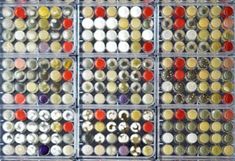PiNet, a Sparkling Science Project
Each living cell must permanently be able to receive signals generated by the environment and integrate them into its actual metabolic and developmental genetic program. Filamentous fungi are the archetypical type of multicellular eukaryotes in which cells are connected by a common cytosol and metabolome but nuclei remain in each of the cells. These interconnected cellular networks are called mycelium and in this project we tested to which extent, how quickly and how far environmental signals are forwarded from a single point in the mycelium to neighbouring cells. In other words: how strong is the fungal “internet”? In addition, fungi have “invented” epigenetic type of gene regulation which describes the establishment of a transcriptional pattern by chemical marks on DNA or chromosomes that is inherited – and thus “memorized” - from one cell generation to the next even if the original signal has vanished already. In this project we tested if the fungal “internet” is not only able to forward genetic information within the network but also to store it as epigenetic memory.
We used new genetic and microscopic technology to perform experiments which provided insight to these questions. Moreover, with the help of students, we acquired a great number of different microbes that are currently identified and tested against our reporter strains.
The signal transduction inside the mycelium was tested using a published interaction system between the mold Aspergillus nidulans and the bacterium Streptomyces rapamycinicus using our newly generated reporter. However, no signal transduction could be observed under the fluorescence microscope, instead, this specific reaction appears localized. Additionally, we identified the bacterial metabolite causing the color change of the fungus. We then changed to second system to investigate the ability of the fungus to memorize specific events. We starved the fungus and analyzed the expression of a metabolite that is specific for starvation. Upon a subsequent second starvation, the expression of this marker gene was faster and stronger. We are quite sure that this effect is based on a transcriptional memory that is not hereditary and therefore not epigenetic.
Microbes - bacteria or fungi - grow in nature in complex, dynamic communities that constantly change according to environmental conditions and food supply. No matter if they work as a decomposer of organic material (saprophytic growth) or as pathogens infect animals and plants (pathogenic growth), everywhere the microbes have to prevail against the ubiquitous food competitors or against the natural defense mechanisms of the attacked organisms.
To accomplish this, most microorganisms employ a broad arsenal of bioactive substances that can suppress the growth of competitors - e.g. fungal antibiotics which act against bacteria (e.g., penicillin) or bacterial toxins directed against fungi (e.g., lipopeptides, surfactants).
Partner school:
Francisco Josephinum
Höhere Bundeslehr- und Forschungsanstalt für Landwirtschaft, Landtechnik und Lebensmitteltechnologie
3250 Wieselburg, Schloss Weinzierl 1 www.josephinum.at
PiNet "The Internet of fungi", a project carried out as part of the Sparkling Science funding program, funded by the Austrian Federal Ministry of Education, Science and Research. www.sparklingscience.at www.bmbwf.gv.at


